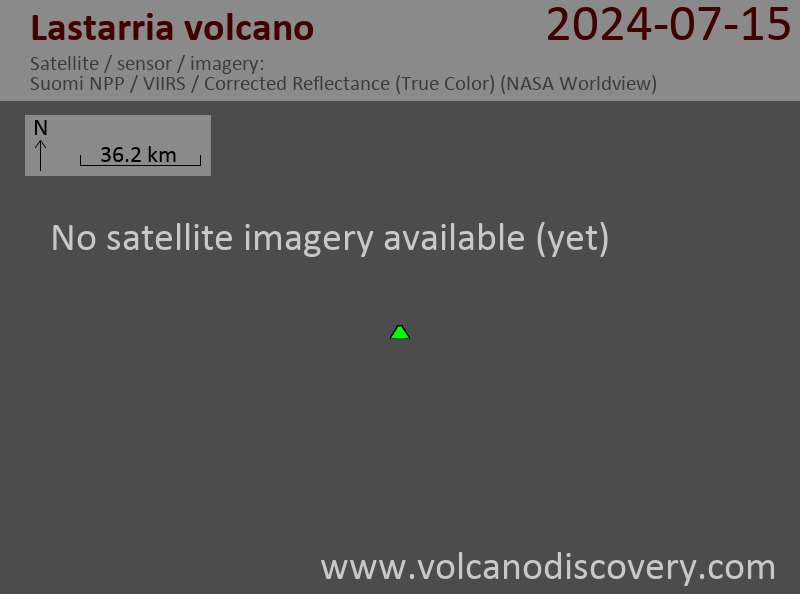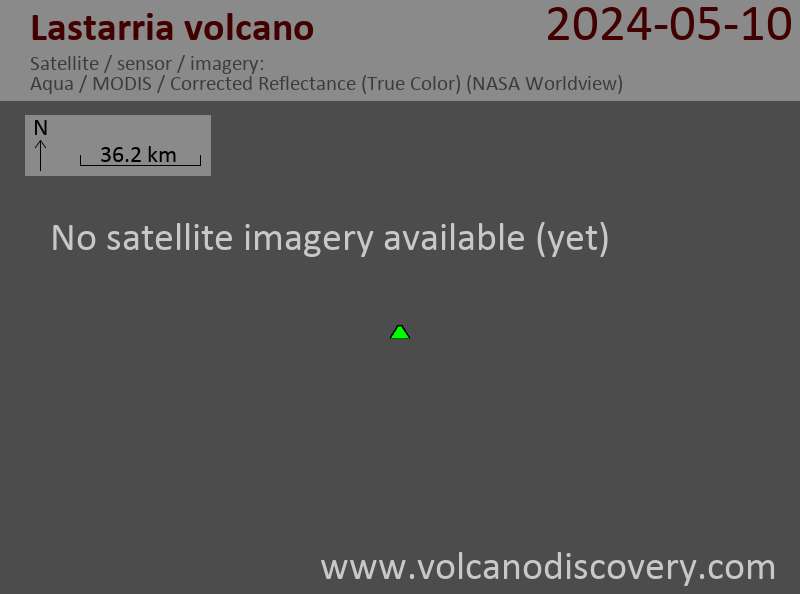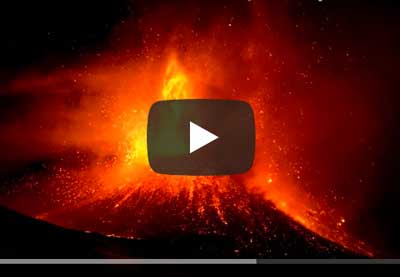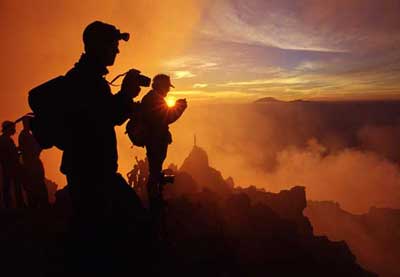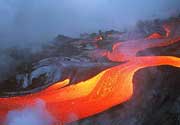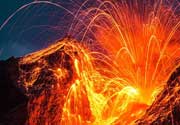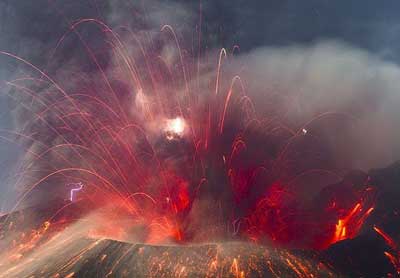Lastarria Volcano
Updated: 16 avril. 2024 08:31 GMT -
stratovolcano 5697 m / 18,691 ft
Chile / Argentine (nord) + Bolivie (Amérique du Sud), -25.17°S / -68.5°W
Condition actuelle: normal / en sommeil (1 sur 5)
Chile / Argentine (nord) + Bolivie (Amérique du Sud), -25.17°S / -68.5°W
Condition actuelle: normal / en sommeil (1 sur 5)
Lastarria is a stratovolcano on the Argentina/Chile border. The volcano contains 5 nested summit craters. The youngest part of the volcano is a lava dome overlapping the northern crater.
A large prehistoric debris avalanche deposit is located on the SE flank and younger deposits of pyroclastic flows form an apron around the the northern base of the volcano.
There are no known historical eruptions, but the young morphology of some deposits suggest that Lastarria has been active during historical time. There is intense fumarolic activity on the rim and flanks of the northern summit crater and its NW flank, and sulfur flows have occurred by melting of extensive sulfur deposits in the summit region.
[smaller] [larger]
Eruptions du volcan Lastarria: unknown, but probably in historic times
Derniers séismes proches
| Heure | Mag. / Profondeur | Distance / Lieu | |||
Introduction
Negriales lava field is a large andesitic-dacitic flow on the western flanks and was erupted from a single vent on the SW-flank of Lastarria volcano.The petrography of the Lastarria complex ranges from pyroxene-rich andesites to pyroxene-amphibole bearing dacites.
Inflation of the Lastarria-Cordon del Azufre complex
Satellite radar measurements have shown that an area of 45x37 km of the Lastarria-Cordon del Azufre complexis undergoing long-term wavelength cycles of ground deformation (inflation and deflation) at maximum rates of 2.5 cm/year. It is believed that this geothermal activity is caused by a pressurized, and partially sealed fluid system similar, but smaller to the very active hydrothermal systems at Yellowstone, Long Valley caldera, or the Campi Flegrei in Italy.
Lastarria debris avalanche
A pre-historic flank collapse occurred on the SE flank of Lastarria volcano. The collapse generated a debris avalanche that climbed and surpassed an older 125 m high scoria cone east of Lastarria. The avalanche had an unusually high velocity of 300 km/hr. Near Lastarria, the detached mass was fluidized and disintegrated, unlike the historic 1980 avalanche of Mt St Helens, which consisted of large coherent blocks, composed of parts of the original mountain flank (interleaved lavas and pyroclastic layers).
Sulfur flows
Lastarria volcano is one of the few locations in the world where sulfur flows have been documents (another example with recent flows is Ijen volcano, East Java). Sulfur usually flows as a Newtonian fluid, but the presence of gas bubbles and crystals at the Lastarria sulfur flows indicated it may have behaved as a Bingham fluid.
---
Sources:
- Smithsonian / GVP Lastarria volcano information
- José A. Naranjo (1992) "Chemistry and petrological evolution of the Lastarria volcanic complex in the north Chilean Andes", Geol. Magazine v 129, pp 723-740
- Froger et al (2007) "Two scales of inflation at Lastarria-Cordon del Azufre volcanic complex, central Andes, revealed from ASAR-ENVISAT interferometric data", Earth and Planetary Science Letters, V. 255 (1-2), pp 148-163
- José Antonio Naranjo and Peter Francis (1987) "High velocity debris avalanche at Lastarria volcano in the north Chilean Andes", Bull. Volc., v. 49 (2), pp 509-514





